SUMMARY
This is AI generated summarization, which may have errors. For context, always refer to the full article.
This compilation was migrated from our archives
Visit the archived version to read the full article.
Once upon a time, not so long ago, there was a country.
It was a country known for 3 things: sparkling beaches, beautiful women, and killing. Killing was its expertise. It was serious business, and nowhere else in the world was murder done for so little money and with such happy commitment.
It began with the mayor. Not the killing, because there had always been killing. It was the mayor who made the killing a matter of national pride.
The mayor was a man’s man, all curses and contradictions buttoned inside a plaid shirt with the labels cut out. He liked motorcycles. He liked guns. He liked boots and corduroys and what he called the weaker sex, particularly of the prettier variety. He kissed many of them during his campaign: lips to lips, with tongue, because that way was delicious and the mayor was not known for stinting on the delicious. He was not a rapist. He only said he wanted to be one, but had arrived too late after the rapists sliced open the woman’s throat. The mayor, after all, should always be first.
The mayor said he was a killer. He said he had shoved a man off a helicopter and was willing to do it again. He said he killed when he was angry and had killed more than a thousand and that he wandered the streets looking to kill as an example to his policemen – although sometimes he said he never killed at all.
There were many things he said that politicians had never said before. He promised to kill a hundred thousand more criminals if he won. He said the fish would feed on the corpses of criminals. He said he would end corruption and crime and drugs inside of his first year. He said he cheated on his wife. He cursed at the Pope. He called the American president a son of a bitch. People thought he was brave and bold and exactly what they needed.
“Take me for what I am,” said the mayor from the south, and the people did.
The beginning
It was late in the evening at the very end of June just after the mayor became the president that he promised his people he was going to kill them. Not all of them, of course. The president was very clear about which of his citizens he would kill.
“I am asking you, do not go [into drugs] because I will kill you,” the president said. “It may not be tonight, it may not be tomorrow, but in 6 years, there will be one day that you will make a mistake and I will go after you.”
It did not take 6 years, or even 6 days. It took roughly 6 hours. The dead man was young. He wore blue shoes. He was killed one short walk away from where the president just spoke. There was a sign beside his body that said “Drug Lord.”
The president was a simple man. Drugs were bad. Anyone involved in drugs or defending drug users was bad and out to destroy the country. It was an easy equation, and fit nicely into the narrative of good against evil that winged its way from island to island. Bite the poisoned apple; sleep forever with the fishes.
Junkies were useless creatures, said the president, worse than slaves, so much worse that “you’re better off with buying a slave in the markets of Africa and the slave markets of the Middle East.” Drugs changed a man. Their brains shrank, they became heartless and mindless, willing to butcher their fathers and rape their grandmothers. The enemy was legion: 3 million, 4 million, 5.
The people who had been living beside drug addicts all their lives were confounded by the discovery they weren’t living with people at all. It was helpful to be told that proper behavior included murdering neighbors and burning houses. Mothers and fathers were exempted from killing their sons and daughters, as the president understood it would be a painful enterprise. That the president announced he was willing to kill his own children if they used drugs was not a surprise. The president, after all, was made of sterner stuff.
Many people died.
Sometimes there were 10, and sometimes 20 bodies a night. They were crack users, small-time dealers, solvent sniffers. Their bodies were rolled into garbage bags. Their heads were wrapped in tape. They were bound, knifed, shot, suffocated, and tossed out of tricycles in the dead of the night. Their corpses were displayed on highways and alleyways. The men who killed them left signs behind: addict, dealer, occasionally thief. Some of the killers took the trouble to dash off jokes and smiley faces.
There were many more ways to die, and not all of them in the hands of masked gunmen. The police were very hardworking. They racked up numbers in the thousands. Here is Juan, opening the door. Here is Juan, dead on the floor.
“If they pull out a gun, kill them,” the president told his troops. “If they don’t, kill them, son of a whore, so it’s over, lest you lose the gun. I’ll take care of you.”
The families were frightened. The fathers wept. The mothers screamed. The wives fainted. The daughters clawed at coffins. There was a glut of new orphans. Corpses piled up naked in funeral parlors, so many that mass burials were held two bodies to a grave, a fit so tight the men with the shovels had to kick in the skulls.
The police said the dead addicts were violent. They were all killed in self-defense. Almost every crime scene listed a gun as evidence the dead man had fought back. If, for example, the corpse lay sprawled on the sidewalk with a .45 upside-down in his hand, or in the wrong hand, or if the wrists were cuffed, or if the revolver appeared after the body hit the ground, there was no need to explain.
“Fought back,” said the police reports. “He surrendered,” said their mothers.
The president applauded his policemen. He said they were doing their jobs.
The killing
Strange things happened in the year the president was elected. A man’s ashes were flushed down the toilet in exchange for a set of golf clubs. A pair of bemedalled policemen wearing wigs and masks were caught murdering a local leader. A small girl watched her father shot, and was told he died in the name of the president. When it happened that most of the dead were poor, the president explained that the poor were easier to kill. They were ignorant, and more likely to be hit.
The president liked to talk, and talked daily, so much so that his silence for 6 days caused much consternation over his health and well-being. There were rumors he was ill. He was quick to disabuse the public of the notion, and was just as quick to accuse inquiring politicians of venereal disease.
The president was a funny man. He had a sense of humor, even if he didn’t have a sense of irony. His deputies spent much of their time explaining the president to the public. They said the press needed “creative imagination” when reporting on the president. They said his threats were meant as “encouragement” to the police and were part of a “psychological war.” They said it was “heightened bravado” when the president told soldiers he would take responsibility if they raped. They said it was “an oblique deflection” when he compared himself to Hitler and said he was happy to slaughter 3 million addicts. He liked to joke, said his spokespeople, he liked to laugh. The president said it himself – only two out of 5 of his statements were true.
He was fascinated with killing, whether in fact or in jest. He said the word often, 1,255 times in public to be exact, in a variety of contexts and against a range of enemies. He said it to 4-year-old Boy Scouts, promising to kill people who got in the way of their future. He said it to overseas workers, telling them there were jobs to be had killing drug addicts. He told erring mayors to repent, resign, or die. He threatened to kill rights activists if the drug problem worsened. He told cops he would give them medals for killing, and promised to pardon the policemen charged for murder by his own bureau.
Foreign governments complained. The United Nations interfered. Human rights organizations said the president could be tried for crimes against humanity. None of them understood that the victims were not victims. They were bad people – barely people. “In the first place,” said the president, “I’d like to be frank with you: are they humans? What is your definition of a human being?”
The president regarded his citizens as children, a fractious, undisciplined lot who needed to be whipped into submission and rewarded when they spelled out their letters right. He returned favor with favor, was stern when he needed to be stern, and charming when he wanted to be charming. He loved all his children except when he hated them, and he hated many of them. He brooked no disagreement – “Now I’m president, you should be careful” – and fired one of his chiefs for saying there were millions less addicts that he claimed.
Some people, perhaps the unenlightened, said the president had failed his promise. He had sworn he would end the scourge of drugs in 6 months, and called anyone who didn’t believe him a sissy. He believed in his promise so much he said he was willing to be killed if he failed.
At the end of 6 months, he said the problem was too big. He asked for 6 months more, and remained very much alive.

‘Did you actually say freedom. Oil on canvas, 2006. Carlo Gabuco.
The ending
In the course of his first year, the president continued to rail at many other enemies. He was a capable man, and capable of hating many things at once. “I hate corruption,” the president said, or possibly joked. “I don’t pretend to be clean. I’ve stolen a lot but it all ran out. Corruption is really out on my term.”
A great many of his supporters – or at least a great many of those who had access to keyboards and the internet – agreed with the president. They hated everyone he hated: liberals, human rights activists, disagreeable journalists, interfering priests, junkies, bleeding-heart students, Ban Ki-Moon, America, the New York Times, the color yellow, and any and all senators who may or may not have had “a propensity for sex.” Many demonstrated their frustration with threats of rape, murder, and arson.
Down in the south, the president was forced to fight another war, this time against terrorists who may or may not have been involved in drugs.
The president said he wanted them dead. Most everyone agreed they should be dead. It was not easy. Civilians were in the way. The armed men were holding whole neighborhoods hostage, waving black flags and doing all sorts of disagreeable things. There were some who pointed out that the president had come from the south. They believed the president would come to save his people.
The president didn’t hold with such sentimental nonsense. “Do not hesitate to kill just because there are civilians there,” said the president to his soldiers.
It was all very confusing, even to some of his loyal supporters, accustomed as they had become to believing that bad people should be killed and good people would be safe. Here was the president telling the soldiers to rain fire on everyone, good, bad, and everything in between. The president, as always, was right.
And so, a year and a day after the mayor became president, weeks after he said the war in the south would end in 3 days, the president threatened “everyone, military, police, religious” who might destroy the country. He would kill them all. Then he turned to the side, pulled up his shirt, and showed off the gun tucked into his waistband.
Once, there was a president. He was considered the best of all possible presidents. His decisions were the best of all possible decisions. His foibles were charming and his enthusiasms were admirable, and if people had to die, by all means they must, because they were not people if they were the enemy. The patriotic sang the president praises, with fervor and with fear. The rallies were held, the columns were written, the critics were jailed and the photographs faked, as the president kept one promise and forgot all the rest.
The story ends this way: out in the east, there was a country. In the country was an island, and in the island there was a palace, and in the palace was a man dressed in corduroys and plaid, blustering and swearing and killing and cursing, the happiest president in the best country in the world. – Rappler.com
Add a comment
How does this make you feel?
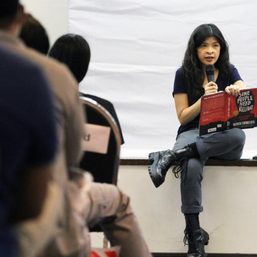
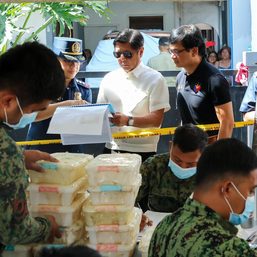
![[OPINION] ‘Some people need killing’](https://www.rappler.com/tachyon/2024/04/tl-some-people-need-killing-04172024.jpg?resize=257%2C257&crop_strategy=attention)
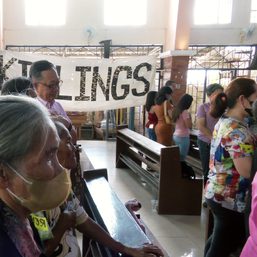
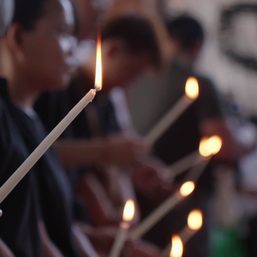

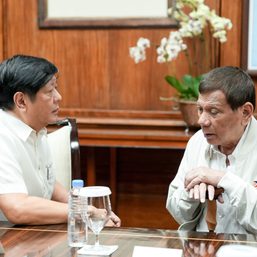

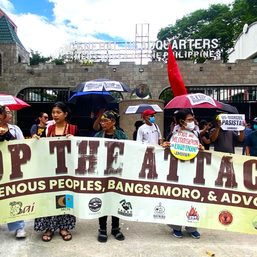
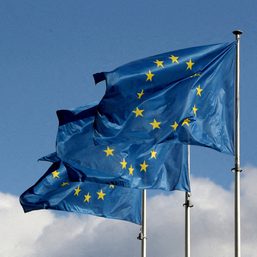
![[EDITORIAL] Sorry Arnie Teves, walang golf sa kulungan](https://www.rappler.com/tachyon/2024/03/animated-arnie-teves-arrest-carousel.jpg?resize=257%2C257&crop=310px%2C0px%2C720px%2C720px)
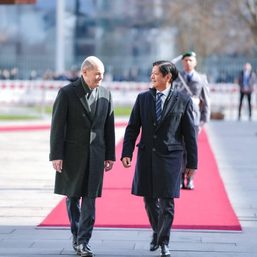
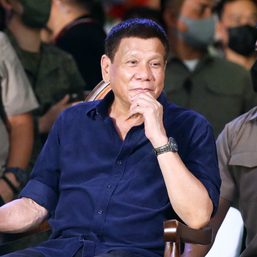
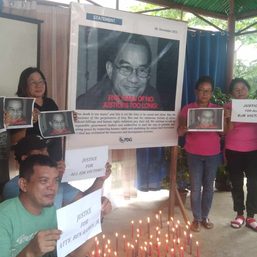
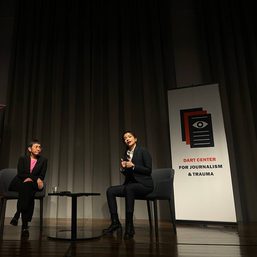
![[The Slingshot] Alden Delvo’s birthday](https://www.rappler.com/tachyon/2024/04/tl-alden-delvo-birthday.jpg?resize=257%2C257&crop=263px%2C0px%2C720px%2C720px)
![[EDITORIAL] Ang low-intensity warfare ni Marcos kung saan attack dog na ang First Lady](https://www.rappler.com/tachyon/2024/04/animated-liza-marcos-sara-duterte-feud-carousel.jpg?resize=257%2C257&crop=294px%2C0px%2C720px%2C720px)
![[Newsstand] Duterte vs Marcos: A rift impossible to bridge, a wound impossible to heal](https://www.rappler.com/tachyon/2024/04/duterte-marcos-rift-apr-20-2024.jpg?resize=257%2C257&crop=278px%2C0px%2C720px%2C720px)

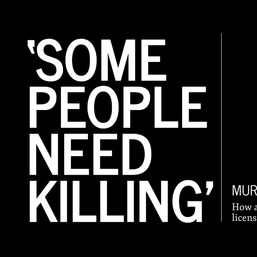
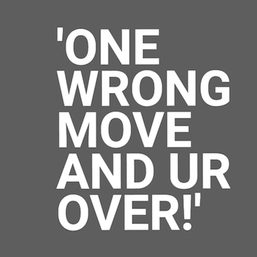
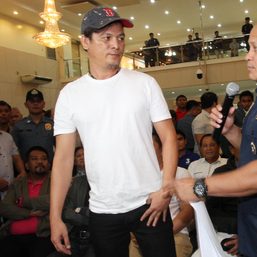
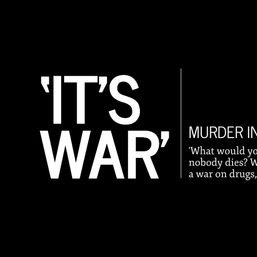
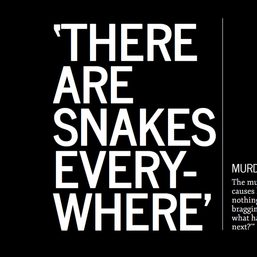
There are no comments yet. Add your comment to start the conversation.